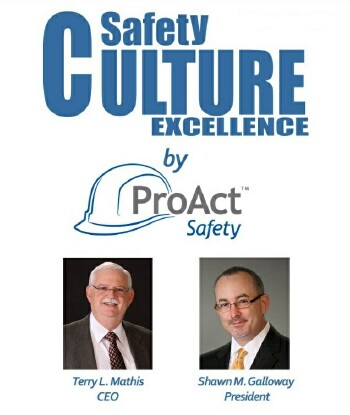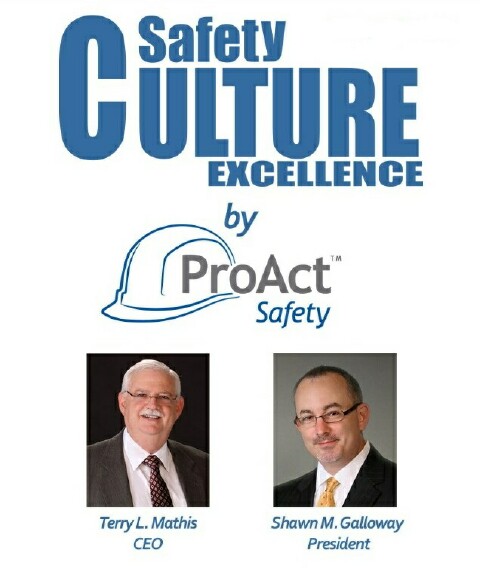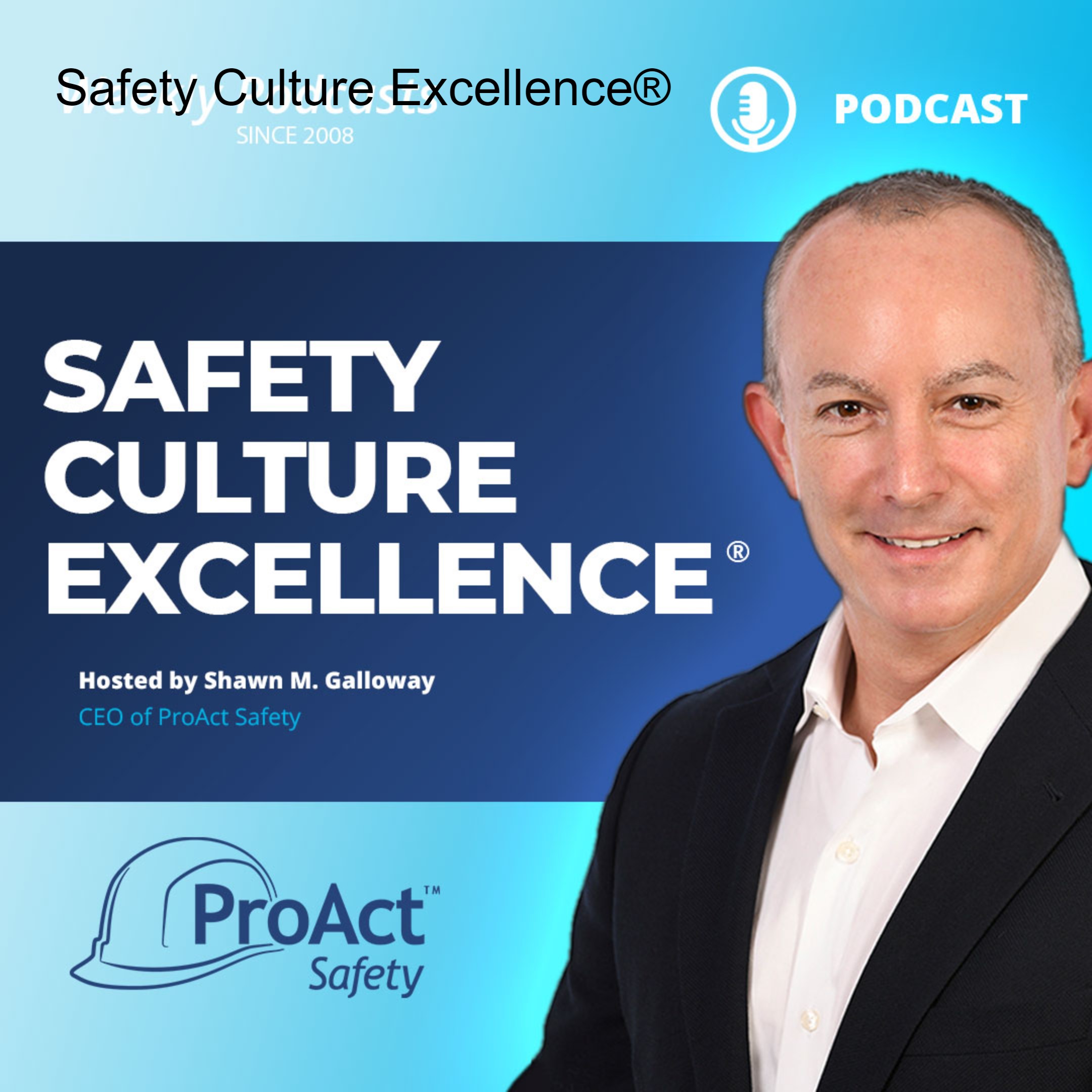Episodes

Wednesday Dec 17, 2014
Checking Off the Box
Wednesday Dec 17, 2014
Wednesday Dec 17, 2014


Wednesday Dec 10, 2014
Do You Have a Scoreboard?
Wednesday Dec 10, 2014
Wednesday Dec 10, 2014


Wednesday Nov 19, 2014
Zero Injuries: What is Really Wrong?
Wednesday Nov 19, 2014
Wednesday Nov 19, 2014


Wednesday Nov 12, 2014
The Magnitude of Change
Wednesday Nov 12, 2014
Wednesday Nov 12, 2014


Wednesday Nov 05, 2014
Where is the Safety Expertise in Your Organization?
Wednesday Nov 05, 2014
Wednesday Nov 05, 2014


Wednesday Oct 29, 2014
The Most Expensive Way
Wednesday Oct 29, 2014
Wednesday Oct 29, 2014


Wednesday Oct 22, 2014
Milestones: The Tendency to Think Backwards
Wednesday Oct 22, 2014
Wednesday Oct 22, 2014


Wednesday Oct 08, 2014
Safety: Seeing or Thinking?
Wednesday Oct 08, 2014
Wednesday Oct 08, 2014
Have you ever seen the puzzle in the comics that ask you to tell the differences between the top and bottom picture. At first glance, they look the same. But, as you look closer, you begin to find minute differences. If the puzzle didn’t tell you the exact number of differences, you might think you had found them all before recognizing some of them. The human brain automatically looks for differences, things not the way they should be, but if the differences are not big and obvious they can be missed.
Safety is dependent on these two kinds of recognition as well. Some risks are big and obvious; others are subtle and take time and concentration to discern. Among the most difficult risks to accurately discern are low-probability risks, those that don’t result in accidents always or regularly.
In accident investigations, we have often already determined the risk involved in the accident and assume that it would have been as obvious to the worker(s) injured as it was to the readers of the report. That is seldom so. If the risk had been obvious, the worker would have taken precautions barring other factors that might have influenced or limited the decision. One of the last frontiers of safety involves helping workers and work groups to identify the subtle risks that don’t automatically catch our attention.
-Terry L. Mathis
For more insights, visit www.ProActSafety.com
Terry L. Mathis is the founder and CEO of ProAct Safety, an international safety and performance excellence firm. He is known for his dynamic presentations in the fields of behavioral and cultural safety, leadership, and operational performance, and is a regular speaker at ASSE, NSC, and numerous company and industry conferences. EHS Today listed Terry as a Safety Guru in ‘The 50 People Who Most Influenced EHS in 2010, 2011 and 2012-2013. He has been a frequent contributor to industry magazines for over 15 years and is the coauthor of STEPS to Safety Culture Excellence, 2013, WILEY.

Wednesday Oct 01, 2014
Performance: People or Process?
Wednesday Oct 01, 2014
Wednesday Oct 01, 2014
What gets an organization the most excellent performance: good people or good processes? Obviously, these two are not mutually exclusive, but most organizations that utilize both favor one or the other. If you view excellent performance as something delivered by all stars, then you favor recruiting and developing people. If you view excellent performance as something delivered by a highly-functioning team, you tend to select adequate workers and give them specific processes to define their contributions to performance.
The most excellent organizations we work with have an interesting blend of these two approaches. They lean heavily toward the people aspect without neglecting the definition that comes from process. In the extreme this is a choice between “hang your brain at the door and follow the procedure” and “ let’s all hold hands and sing Kum ba yah.” Even great people need direction and no amount of direction can compensate for too much lack of ability.
Neither of these approaches alone has ever proven to produce the highest levels of performance, but the right combination and blending of the two can and has led organizations to levels of performance they didn’t think was possible.
-Terry L. Mathis
For more insights, visit www.ProActSafety.com
Terry L. Mathis is the founder and CEO of ProAct Safety, an international safety and performance excellence firm. He is known for his dynamic presentations in the fields of behavioral and cultural safety, leadership, and operational performance, and is a regular speaker at ASSE, NSC, and numerous company and industry conferences. EHS Today listed Terry as a Safety Guru in ‘The 50 People Who Most Influenced EHS in 2010, 2011 and 2012-2013. He has been a frequent contributor to industry magazines for over 15 years and is the coauthor of STEPS to Safety Culture Excellence, 2013, WILEY.

Wednesday Sep 24, 2014
Awareness vs. Performance
Wednesday Sep 24, 2014
Wednesday Sep 24, 2014
When my staff wrote a training objective that contained the word “awareness” I made them re-write it. Why? Because it is not a performance term! Awareness is simply a cognitive function. All it requires is being awake and paying a modicum of attention. Do you want your children to be aware of traffic or stay out of it? Do you want your workers to passively be aware of risks or actively take precautionary measures?
Training objectives need to be performance-based, i.e. “Given this training, workers will take these precautions regularly within 20 days.” Performance-based objectives are observable in the workplace and can be measured. But training is not the only realm in which performance should the objective. In safety, all communication, leadership, supervision, coaching, and peer interaction should be aimed at improved safety performance.
Yes, awareness is important; but it is a step toward a goal, not the goal itself. If safety-improvement efforts stop at awareness, they will result in a mental state, not a performance step change.
-Terry L. Mathis
For more insights, visit www.ProActSafety.com
Terry L. Mathis is the founder and CEO of ProAct Safety, an international safety and performance excellence firm. He is known for his dynamic presentations in the fields of behavioral and cultural safety, leadership, and operational performance, and is a regular speaker at ASSE, NSC, and numerous company and industry conferences. EHS Today listed Terry as a Safety Guru in ‘The 50 People Who Most Influenced EHS in 2010, 2011 and 2012-2013. He has been a frequent contributor to industry magazines for over 15 years and is the coauthor of STEPS to Safety Culture Excellence, 2013, WILEY.

